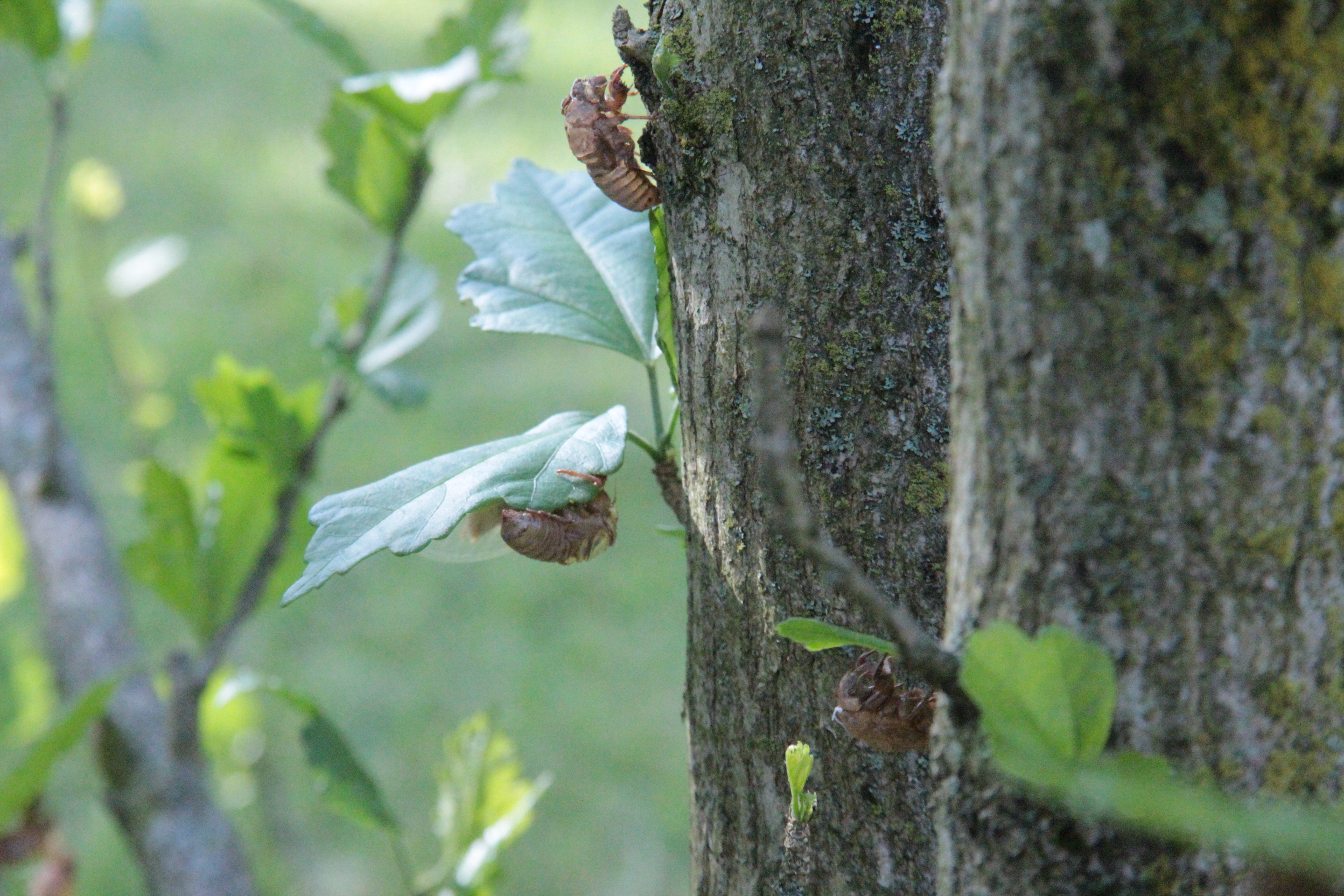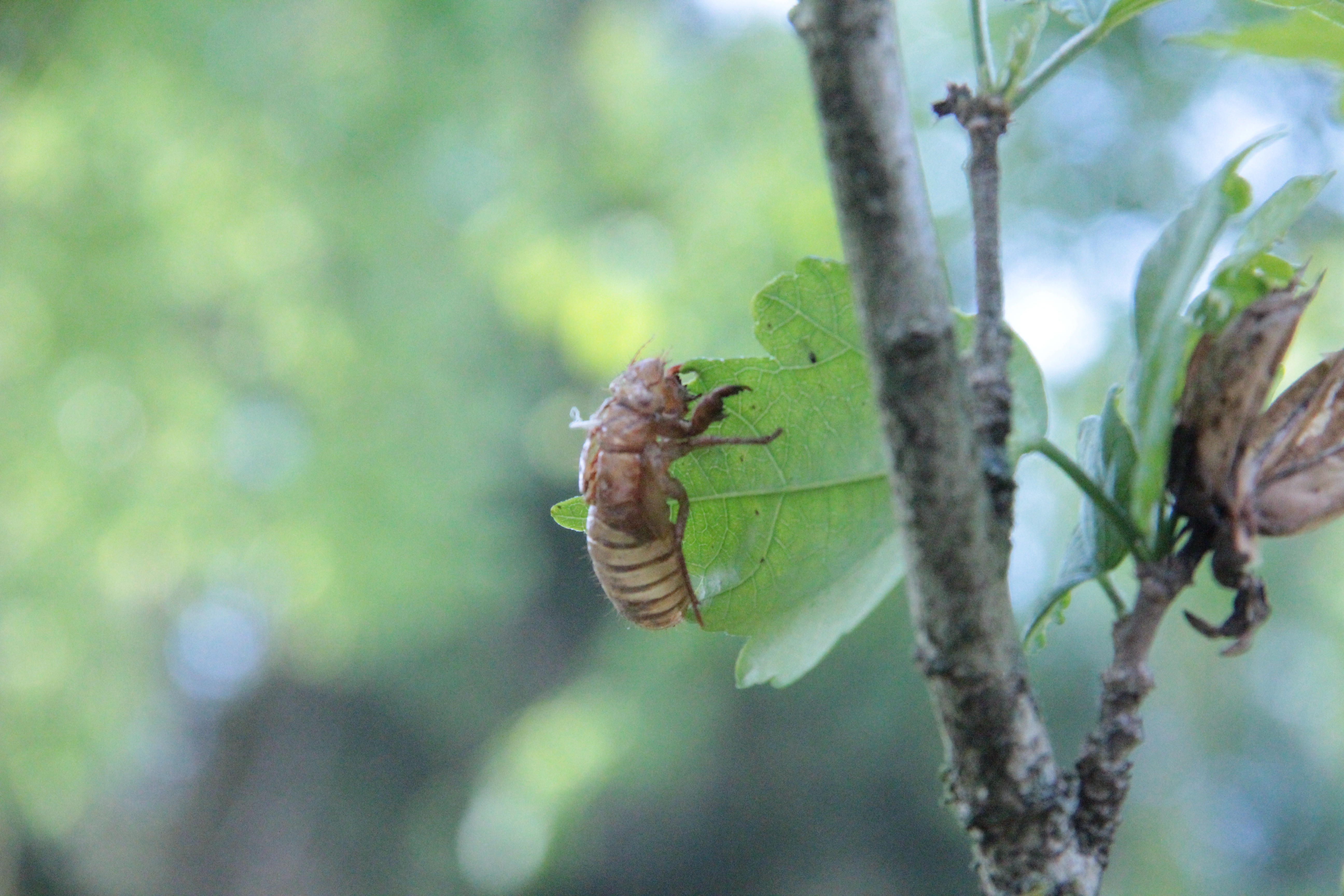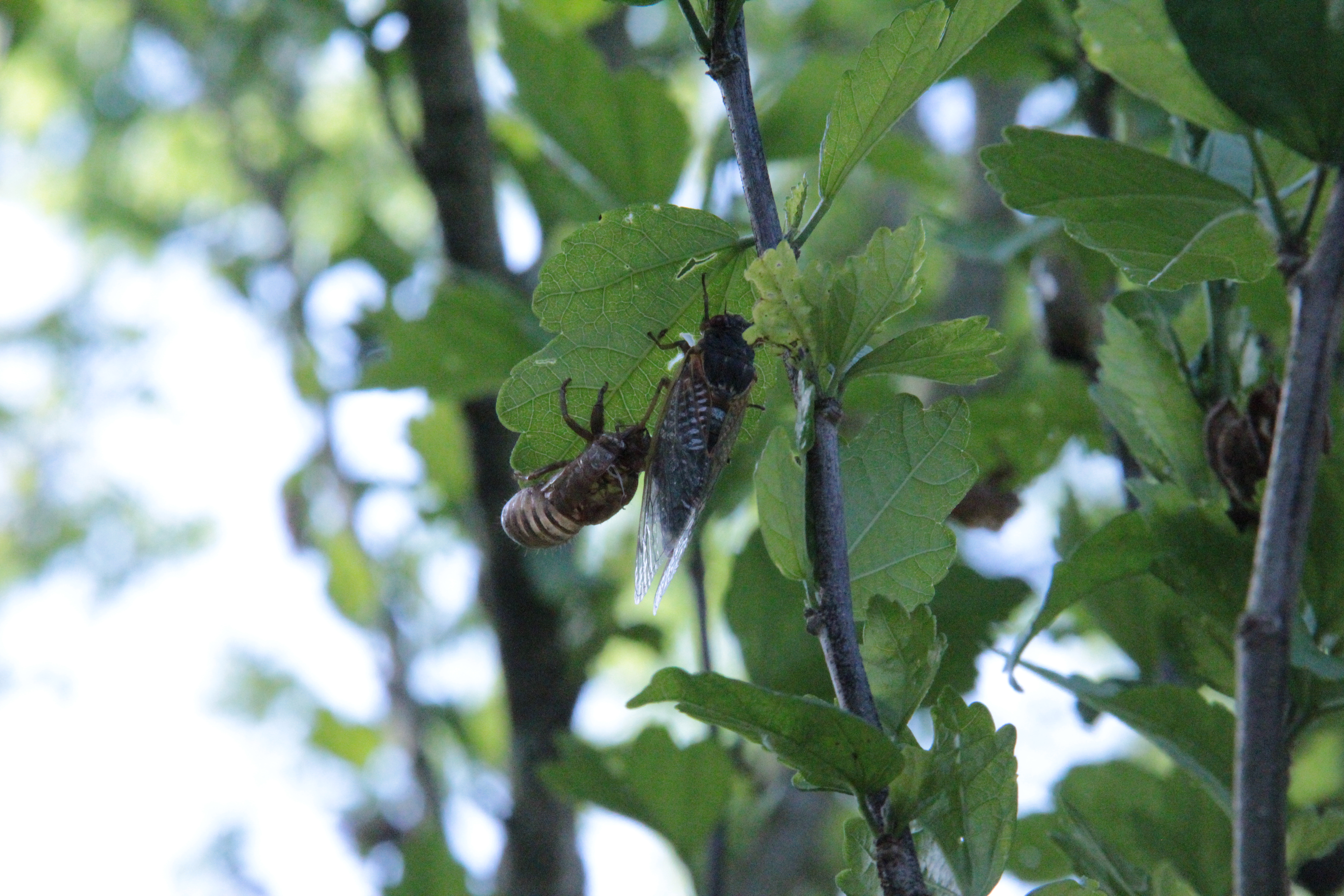




Found these guys this morning when I let the dog out and they were all over my trees. This is just the beginning. For more information, check out this article from WVU Extensions Services and this article by Daniel E. Brown, Arborist
2016, Return of the 17 year Locusts (Cicada)
by Daniel E. Brown, Arborist
Every 17 years, when soil temperature reaches 64 degrees, the Cicada (Magicicada sp.) climb to the surface, as nymphs, to molt into adults and mate. They are known as Brood V Cicada. After molting, male and female cicada make a mating song sound, which in mass, create noise levels to be obnoxiously loud. Once they mate, the fertilized female cicada lay eggs in pencil sized diameter branches and twigs. These twigs/ branches are sliced by the female ovipositor (egg layer) and eggs are then deposited within. This is called “stitching a nest”. These effected twig/ branches that die, due to stitching, are called “flagging”. Eggs hatch very tiny nymphs that fall to the ground, burrowing into the soil to feed on roots for the next 17 years. Cicada emerge in mid-May to early June.
Facts:
1. Cicada do not bite or sting people or animals. They are strictly vegetarians.
2. Female cicada cannot fit through ¼ inch square netting, to stitch an egg nest.
3. Females seek woody stalks ½ in to 1 inch in diameter to stitch their eggs into nests. Even 1 1/2 in diameter young tree trunks get stitched and mortality or disfiguration will occur.
4. Females can stitch up to 600 eggs.
5. 37 counties in WV are affected by Brood V, besides counties in OH, NY, PA, western MD, and Southwestern VA.
6. Eggs hatch mid-summer (July).
7. Adult cicada die, 4 to 6 weeks after emergence.
8. Once emergence happens, you have 5 to10 days to cover young trees (with netting) before the female starts to stitch nests.
9. Cicada are non-toxic. There are different cooking recipes for cicada.
10. Insecticides seem ineffective. Cicada do not feed once they molt, so they cannot ingest insecticides.
11. 20 to 24 eggs are stitched per nest.
12. Hold off on planting new trees until fall, to be cicada safe.
Trees needing protection against stitching of nests:
Apple trees, arborvitae, ash, beech, crabapple, cherry, dogwood, hawthorn, hickory, holly, Japanese maple, lilacs, magnolia, maples, oak, peach, pear, rhododendrons, rose-of-sharon, spirea, viburnum, and willow trees.
Homeowners should avoid planting new trees in spring prior to a cicada emergence. One of the best ways to prevent damage is to cover young trees with, finely woven netting (1/4” or less) or garden woven cloth such as Reemay . This physically prevents females from laying eggs in the twigs. Insecticides are of limited use in protecting trees from cicada damage, due to their overwhelming numbers and ability to “fly-in” from surrounding locations. Injured wood can often be pruned out next winter.
